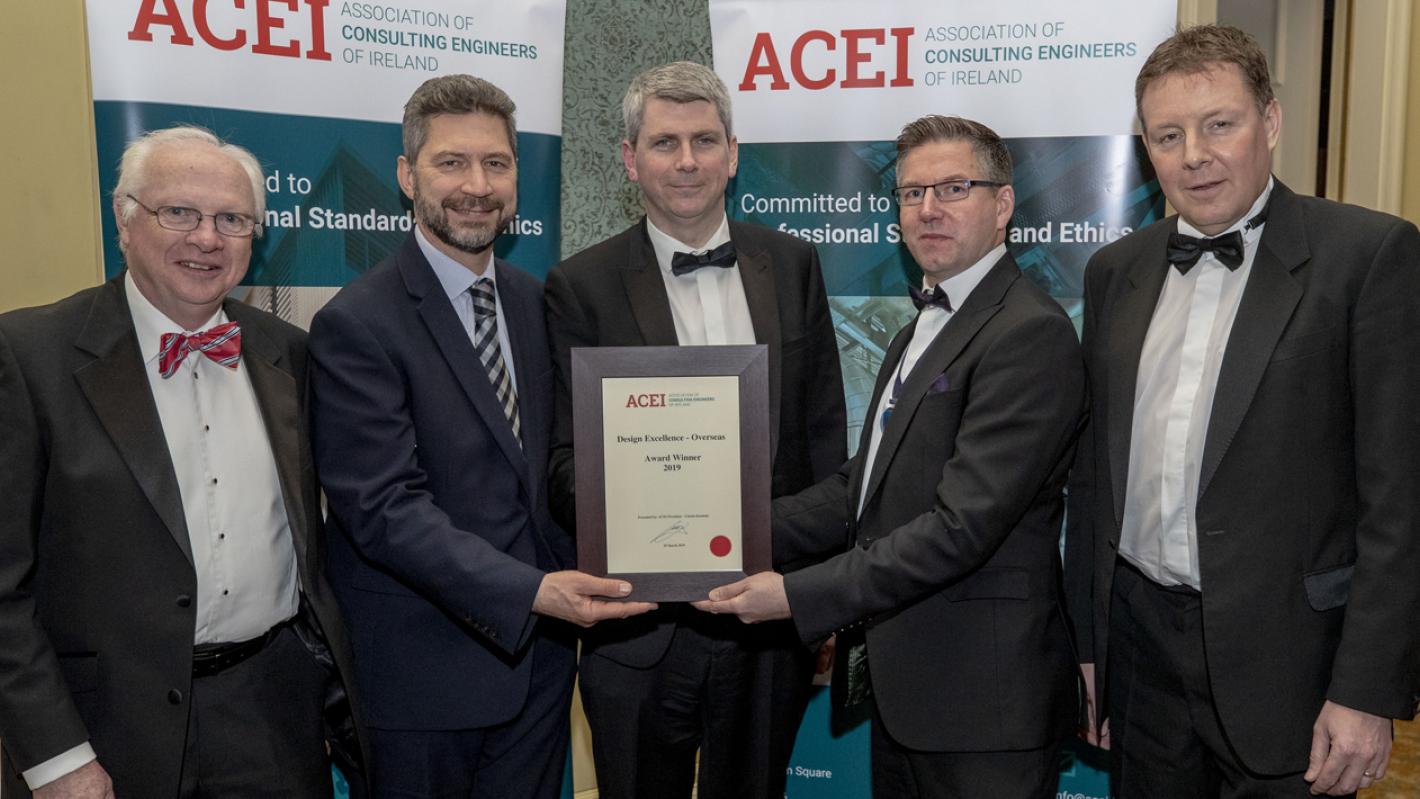
Pictured (L-R): Fintan Buggy, ROD; Davood Liaghat, Buro Happold; Tony Dempsey, ROD; Ciaran Kennedy, ACEI President; David Parr, Farrans.
Northern Spire Bridge wins at the ACEI Design Excellence Awards 2019
Roughan & O’Donovan (ROD) was named the winner of the Overseas - Large Project Category Award 2019 at the annual Association of Consulting Engineers of Ireland (ACEI) Design Excellence Awards in Dublin last Friday night.
The award is in recognition of the company’s outstanding work on the Northern Spire Bridge in Sunderland.
In accepting the award, Tony Dempsey, Project Director at ROD, praised the ‘passion and commitment of the entire project team, whose readiness to push design parameters to new levels and ability to cope with the considerable complexities involved made the bridge such a compelling creation.’
The team included ROD’s design partner on the project, Buro Happold, its client, Farrans Victor Buyck Joint Venture, piling contractor Quinn Piling and specialist Fugro-Loadtest.
Northern Spire Bridge is 340m long and comprises a 24m-wide deck, supported by a 1,550 tonne, 105m-high A-frame pylon. It carries two lanes of traffic in either direction, with dedicated cycle-ways and footpaths along the full length of the crossing.
The bridge stands apart from traditional cable-stayed solutions in that its central pylon was fabricated in one piece off site and transported by sea to the bridge site, and its deck was assembled in two sections alongside the bridge and launched in two separate phases across the river.
These innovations provided substantial benefits, in terms of construction and whole-life maintenance costs, to the client, Sunderland City Council.
The decision to pre-fabricate the pylon in a single piece off site while its foundations, which consist of bored cast-in-place composite piles and pilecap, were constructed onsite was ground-breaking.
It reduced the programme of on-site works by nine months when compared with the traditional form of pylon construction, which follows a linear programme of piles, pilecap and segmental pylon construction.
It also resulted in better quality control, reduced the risk of weather disruption and improved safety.
Assembling the bridge deck in two sections and launching it in two separate phases also produced significant cost savings.
300m of the 340m long bridge deck was launched across the river on temporary supports and associated foundations while the remaining portion - the approach span - was lifted into position by crane afterwards.
The deck steelwork (2000t) was prefabricated off site and delivered in transportable sections for assembly by bolting/ welding.
A launching nose and tail frame was installed and the first 172m section of the bridge was launched into position using strand jacks to pull the rear of the assembly forward and low friction rollers to support the bottom flange of the girders.
The 105m high, 1550t steel/concrete pylon was raised into the vertical position using cables.
Temporary hinges were provided on top of the concrete ‘tusks’ at the base of the pylon to facilitate the lift. A temporary back mast was fitted to the pylon and hoisted vertical from a barge using 4 number 450t capacity strand jacks.
Once the pylon had been raised into position, the second section of the bridge was then launched.
The bridge opened to the public in August 2018, and it is already an established landmark in the surrounding area.
In addition to reducing congestion and travel time for motorists in Sunderland, the bridge will attract investment, boost the economy and lead to more jobs in the region.
The short-list for the award included two very fine developments in London, namely, Waterman Moylan’s ‘Two Fifty One’ and Barrett Mahony Consulting Engineers’ 111 Westminster Bridge Road.
